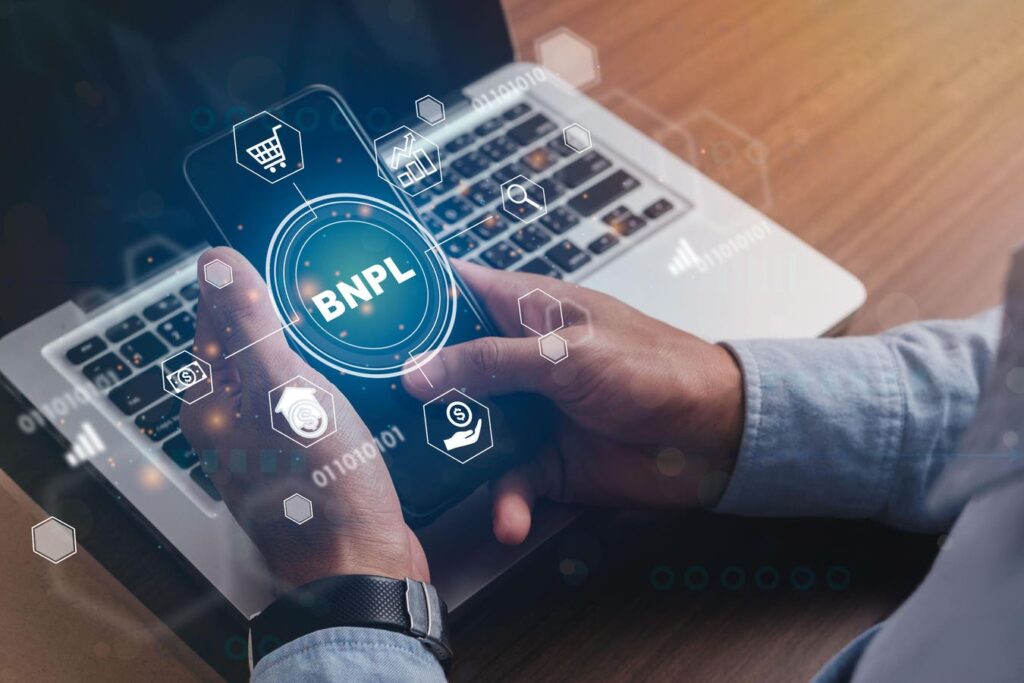As the holiday shopping season unfolds, the popularity of Buy Now, Pay Later (BNPL) loans is on the rise, allowing consumers to finance a wide range of purchases, from groceries and dining to travel and electronics. According to CNBC’s Small Business Survey, this financial tool has seen increased usage, particularly among Black and Hispanic Americans, with 12% and 13% of these groups utilizing BNPL for holiday shopping compared to 5% of white Americans. Fast-growing BNPL companies like Klarna and Affirm are poised to take advantage of this trend, with projections suggesting they could drive up to $18.5 billion in online spending this season, marking an 11.4% increase from the previous year.
BNPL options are being recognized as significant drivers for financial inclusion, particularly for individuals who are credit invisible or fall into the subprime category. Recent data from LexisNexis Risk Solutions reveals that by November 20th, BNPL usage had surged by 23% year-over-year. Notably, a significant portion of existing BNPL users—69%—carry revolving credit card debt month-to-month. While BNPL can offer convenient access to credit, it is essential for consumers to exercise caution due to high fees and inconsistent consumer protections. Moreover, retailers can inadvertently pressure buyers to accumulate more debt through their BNPL offerings, making it crucial for consumers to navigate this financing method carefully.
The potential for growth in the BNPL sector is considerable, with Allied Research forecasting the market could reach an impressive $3.98 trillion by 2030. However, this expansion also raises concerns about consumer understanding of this financing model. During the 2023 holiday season, a staggering 91% of BNPL transactions were made by repeat customers, signaling a reliance on these services that may not fully capture the financial risks involved. As many consumers struggle to grasp the implications of this debt financing, the risk of falling into unfavorable financial situations becomes more pronounced.
Looking ahead to the 2024 holiday season, trends indicate it will be remarkably mobile, with estimates suggesting $128.1 billion will be spent through mobile devices. This uptick in mobile commerce is expected to correlate with a further rise in BNPL service utilization. Experian has highlighted that the average purchase amount for BNPL loans currently sits at approximately $132, reflecting a pattern of consumer behavior that integrates technology with financial services.
Younger demographics, particularly millennials and Generation Z, are emerging as key drivers of the BNPL economy. Research from Lending Club indicates that nearly half of both millennials and Gen Z participants are highly likely to finance holiday purchases via options such as BNPL, credit cards, or personal loans. According to Adobe’s findings, 39% of millennials plan to use BNPL services this shopping season, closely followed by 38% of Gen Z consumers. This trend underscores a cultural shift towards accepting alternative payment methods among younger consumers as they navigate holiday spending.
Despite the appeal of BNPL solutions as manageable, bite-sized payments, they carry inherent risks. The continued pressure of inflation has strained household budgets, prompting the need for innovative financial solutions. However, a 2024 LendingTree survey revealed that 47% of BNPL users had fallen behind on payments, including 34% who had made a late payment in the past year. This data illustrates the potential pitfalls of BNPL financing, suggesting that while these payment methods can offer flexibility, they may also contribute to financial instability for some users. As consumers engage with these payment options, the importance of responsible financial management cannot be overstated.

